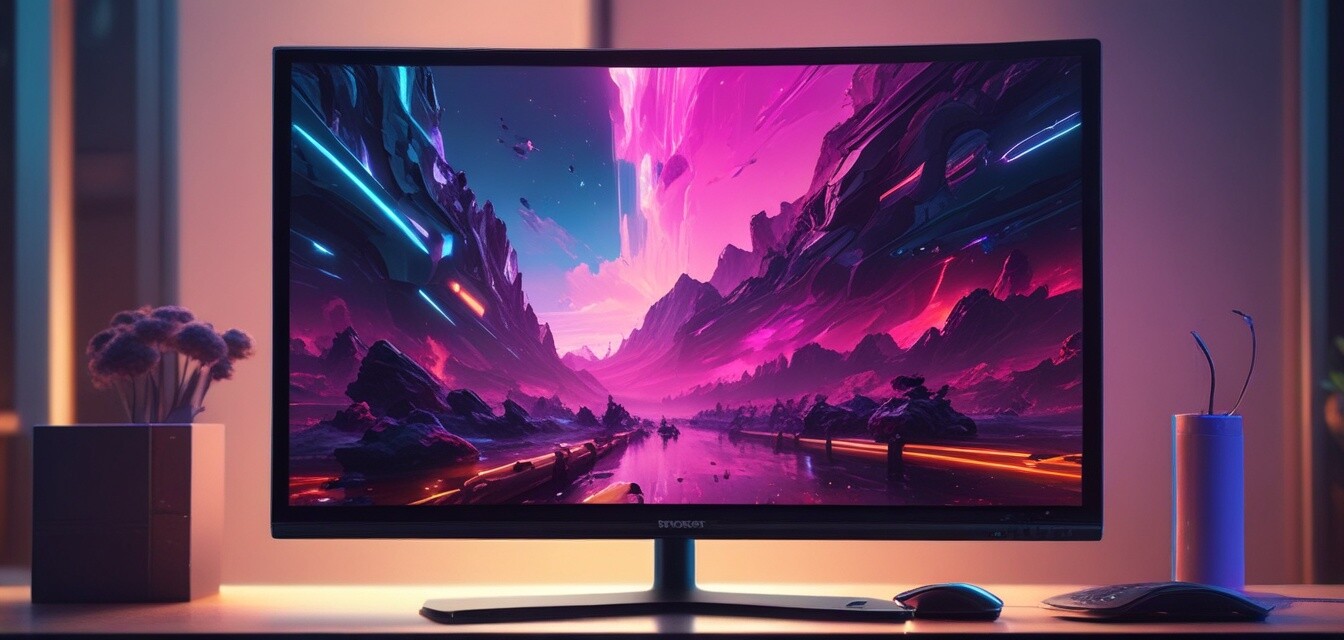
The evolution of gaming monitor technology: What’s next for OLED?
Key Takeaways
- OLED technology continues to evolve, presenting new opportunities for gamers.
- Expect advancements in refresh rates, color accuracy, and adaptive sync technologies.
- Energy efficiency and sustainability are becoming crucial factors in monitor development.
- As gaming evolves, so do the needs for enhanced display technologies.
- Stay informed on the latest trends through our news and trends section.
The world of gaming monitors has experienced remarkable changes over the years, with OLED technology leading the charge in both performance and visual fidelity. This article delves into the anticipated advancements in OLED gaming monitor technology and what features gamers can look forward to in the near future.
Understanding OLED Technology
OLED, or Organic Light Emitting Diode, represents a groundbreaking shift in display technology. Unlike traditional LCD monitors, OLED panels emit light individually per pixel, resulting in deeper blacks and richer colors. This capability has made OLED a favorite among both gamers and content creators.
Benefits of OLED in Gaming
- Improved Contrast Ratio: Each pixel can turn off completely, achieving true black levels that enhance overall contrast.
- Faster Response Times: Gamers benefit from reduced motion blur due to rapid pixel switching.
- Wider Viewing Angles: OLED displays maintain color integrity and brightness at wider angles compared to LCDs.
- Vibrant Color Representation: OLED panels deliver exceptional color accuracy and saturation.
Future of OLED Gaming Monitors
As technology progresses, the capabilities of OLED monitors will continue to expand. Here are some anticipated developments:
1. Higher Refresh Rates
The current standard refresh rate for OLED monitors is around 120Hz, but industry experts predict that we can expect OLED models with refresh rates of 240Hz or even higher. This improvement will ensure smoother gameplay, especially in fast-paced titles.
2. Enhanced Color Accuracy
Future OLED monitors will likely feature even better color accuracy and vibrancy, making games look more lifelike. Technologies like quantum dot enhancement will likely be integrated to broaden the color gamut.
3. Adaptive Sync Technologies
With the rise of games that demand high-performance displays, advancements in synchronization technologies such as G-Sync and FreeSync will further enhance the gaming experience by minimizing screen tearing and stuttering.
4. Energy Efficiency
As environmental concerns grow, OLED technology is also becoming more energy-efficient. Future models will likely consume less power while maintaining fantastic brightness and color fidelity.
5. Curved Displays
Curved OLED gaming monitors will become increasingly popular, as they provide an immersive experience by wrapping the screen around the viewer. This is especially beneficial in gaming sessions.
Comparison of OLED and Traditional Monitors
| Feature | OLED Monitors | Traditional Monitors (LCD) |
|---|---|---|
| Response Time | 1ms | 5-10ms |
| Contrast Ratio | Infinite (True black) | 1000:1 |
| Color Range | 100% DCI-P3 | 80% sRGB |
| Viewing Angles | Wide (up to 178°) | Narrow (dependent on panel type) |
| Price | Higher initial investment | Generally more affordable |
Understanding Key Trends in OLED Gaming Monitors
Staying ahead of the curve means understanding the key trends shaping the OLED market. Here are a few noteworthy movements:
1. Increased Gamification of Displays
With gaming becoming more mainstream, manufacturers are exploring features specifically catered to gamers, including customizable RGB lighting and tailored gaming modes.
2. Integration with VR and AR
The synergy between OLED monitors and virtual/augmented reality solutions is a hot topic. New developments will likely see displays that better integrate with VR headsets, improving the overall gaming experience.
3. Sustainability in Production
Manufacturers are keen to adopt eco-friendly practices. Sustainable production methods will become essential as consumers demand environmentally responsible products.
4. Smart Functionality
Future monitors might include AI-assisted functionalities, such as automatic brightness adjustments based on ambient light and adaptive cooling systems to enhance performance during extended gaming sessions.
Pros
- Vivid colors and excellent contrast ratios enhance gaming.
- Rapid response times and refresh rates improve gaming performance.
- Versatility for both gaming and content creation applications.
- Increasingly energy-efficient, aligning with sustainable practices.
Cons
- Higher price point compared to traditional monitors.
- Potential for burn-in with static images.
- Availability of higher-end models may be limited.
Conclusion
The future of OLED gaming monitors is bright, with many exciting advancements just around the corner. As technology continues to evolve, gamers can expect even more immersive and high-performing displays that will enhance their gaming experiences. To keep up with the latest developments, explore our News and Trends section regularly for updates on the latest innovations in OLED technology.